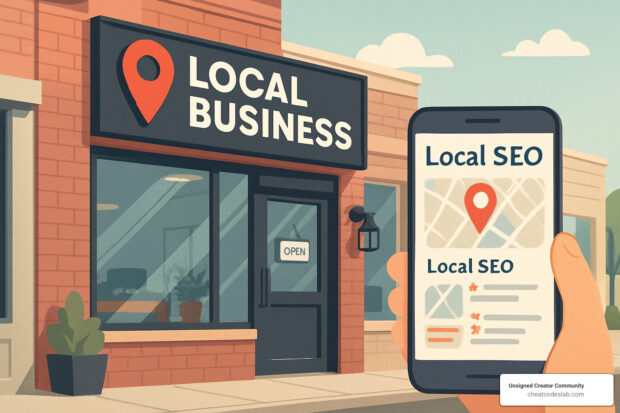
The #1 Powerful Guide to Content Marketing Essentials in 2024

The Role of Content Marketing in Digital Strategy
Content marketing essentials are crucial for any brand looking to thrive in today’s digital landscape. If you’re an entrepreneur or influencer aiming to scale your online presence and improve brand visibility, understanding the basics of content marketing is non-negotiable. Here’s a quick overview before we dive deeper:
- Definition: Content marketing is the process of creating and distributing valuable, relevant, and consistent content to attract and retain a clearly defined audience.
- Goals: Increase brand awareness, drive traffic, generate leads, and boost sales.
- Strategy: Involves planning, creating, distributing, sharing, and publishing digital content.
- Key Elements: Clarity, consistency, creativity, credibility, and customer-centricity.
Content marketing is part of the broader field of digital marketing. It focuses on producing engaging and valuable materials that can be distributed across various platforms, such as blogs, social media, and email newsletters. An effective content strategy can help you reach your target audience, build credibility, and drive sales.
I’m digitaljeff, and I’ve spent over 20 years working in tech, digital media, marketing, and content strategy. My journey from print journalism to digital publishing has given me unique insights into content marketing essentials. Let’s explore how these basics can revolutionize your brand and set you apart in a crowded market.

What is Content Marketing?
Definition
Content marketing is the strategic approach to creating and distributing valuable, relevant, and consistent content. The objective is to attract and retain a clearly defined audience — and, ultimately, to drive profitable customer action. Unlike traditional advertising, content marketing doesn’t interrupt the consumer but provides information and value they seek.
Goals
The primary goals of content marketing include:
- Brand Awareness: Getting your brand known by the right people.
- Audience Engagement: Keeping your target audience interested and engaged.
- Lead Generation: Identifying and nurturing potential customers.
- Customer Loyalty: Building a strong relationship with your audience to keep them coming back.
- Sales: Encouraging your audience to make a purchase.
For example, a well-known inbound marketing platform uses content marketing to attract millions of visitors to their website and YouTube channel. This strategy has helped them improve brand awareness, establish industry leadership, and increase conversions.
Audience
Understanding your target audience is crucial. Ask yourself:
- Who is your ideal customer?
- What are their pain points?
- What type of content do they consume?
A well-defined audience ensures your content is relevant and valuable. For instance, if your audience consists of advanced executives, avoid beginner-level keywords and topics.
Value Proposition
Your content should offer a clear value proposition. This means delivering content that:
- Solves Problems: Addressing specific issues your audience faces.
- Educates: Providing valuable information that helps your audience make informed decisions.
- Entertains: Keeping your audience engaged and interested.
- Inspires: Motivating your audience to take action.
Content marketing is most effective when it meets an unmet need. For instance, a significant percentage of consumers prefer learning about products through articles rather than ads. This shows that valuable content can be more effective in attracting and retaining customers than traditional advertising methods.
By focusing on these content marketing essentials, you can create a strategy that not only attracts but also retains and converts your target audience. This sets the stage for the various types of content marketing we’ll discuss next.
The 5 C’s of Content Marketing
To master content marketing essentials, it’s crucial to understand the 5 C’s: Clarity, Consistency, Creativity, Credibility, and Customer-centricity. These principles guide you in creating content that resonates with your audience and achieves your marketing goals.
Clarity
Clarity means making your message easy to understand. If your audience can’t grasp your content quickly, they’ll move on. Use simple language, short sentences, and clear headings. For example, instead of saying “use,” say “use.”
Here’s a quick tip: Always aim for a grade 8 reading level. Tools like Hemingway Editor can help you simplify your text.
Consistency
Consistency in content marketing is about maintaining a uniform brand voice and style. This builds trust and makes your brand recognizable. Create a style guide that outlines your tone, vocabulary, and formatting rules.
For instance, if your brand voice is casual and friendly, it should stay that way across all platforms—whether it’s a blog post, social media update, or email newsletter.
Creativity
Creativity sets you apart from the competition. Use unique angles, storytelling, and visuals to make your content stand out.
Imagine you’re writing about eco-friendly cleaners. Instead of a dry list of benefits, you could share a story about a family that improved their health by switching to non-toxic products. This makes your content engaging and memorable.
Credibility
Credibility is built through accurate information and transparency. Always fact-check your content and cite reputable sources.
For example, if you’re discussing the dangers of VOCs in cleaning products, link to studies from trusted organizations like the Environmental Protection Agency (EPA). This not only backs up your claims but also builds trust with your audience.
Customer-centricity
Customer-centricity means putting your audience’s needs first. Understand their pain points and create content that offers solutions.
For instance, if your audience is interested in reducing household toxins, create a blog post titled “9 Steps to a VOC-Free Home.” This not only provides value but also aligns with your product offerings, creating seamless opportunities for conversions.
By focusing on these 5 C’s, you can create content that is clear, consistent, creative, credible, and customer-centric. This sets the foundation for a successful content marketing strategy, which we’ll explore in more detail in the next sections.
The 4 Pillars of Content Marketing
Customer
The first pillar is the customer. Everything starts with understanding who your audience is and what they need. Customer-centricity is key. This means creating content that addresses their pain points and provides real solutions.
Example: If you’re a finance startup, and you know your customers plan their financials at the start of the year, publish a blog post in January about budgeting quarter-over-quarter. This aligns with their behavior and needs, making your content timely and engaging.
Cost
Next is cost. Content marketing can be more cost-effective than traditional marketing methods. Content marketing generates over three times more leads than outbound marketing and costs significantly less on average.
Example: A popular entrepreneur spends a substantial monthly amount to produce numerous content pieces. This investment pays off by generating high-quality leads and increasing brand awareness.
Convenience
The third pillar is convenience. Make it easy for your audience to access and consume your content. This includes optimizing your content for mobile devices and ensuring it’s easy to find on your website.
Example: A notable online retailer highlights its products’ most valuable features directly on their product pages, making it convenient for customers to understand why they should choose these products over competitors.
Communication
Finally, communication. Effective communication is crucial in building a connection with your audience. Your content should reflect your brand’s voice and values consistently across all platforms.
Example: Use a writing style guide and a brand style guide to ensure your tone and visuals are consistent. This helps in building trust and making your brand easily recognizable.
By focusing on these four pillars—customer, cost, convenience, and communication—you can create a robust content marketing strategy that drives results. Next, we’ll dive into the various types of content marketing you can leverage.
Content Marketing Essentials
Definition
Content marketing is the art of creating, sharing, and distributing valuable content to attract and engage your target audience. This content can take many forms: blog posts, videos, infographics, podcasts, and more. The goal is to provide value to your audience, not just to promote your products or services.
Goals
The primary goals of content marketing include:
- Increasing Brand Awareness: Content helps you get noticed and remembered.
- Generating Leads: Quality content can attract potential customers.
- Engaging Your Audience: Good content keeps your audience interested and coming back for more.
- Driving Conversions: The goal is to convert your audience into paying customers.
Audience
Knowing your audience is crucial. You need to understand their needs, challenges, and preferences. This means creating detailed buyer personas that include:
- Demographics: Age, gender, location, income.
- Interests: What they like to read, watch, or listen to.
- Pain Points: What problems they are trying to solve.
- Behavior: Where they spend their time online.
For example, if your audience consists of young professionals, your content might focus on career advice or productivity tips.
Value Proposition
Your value proposition is what sets you apart from the competition. It’s the unique benefit your content offers to your audience. This could be in-depth research, expert opinions, or practical tips that they can’t find elsewhere.
By focusing on these content marketing essentials—definition, goals, audience, and value proposition—you can create a solid foundation for your content strategy. Next, we’ll explore the different types of content marketing you can use to reach your audience.
Types of Content Marketing
Content marketing is diverse and offers many ways to engage your audience. Here are some of the most effective types:
Online Content Marketing
Online content marketing refers to any material you publish online, particularly web pages. A strong online content strategy helps you rank higher in search engine results pages (SERPs). This means more people find you when searching for related topics.
Example: HubSpot’s homepage immediately engages visitors with specific content about their products, helping them rank higher on Google.
Social Media Content Marketing
With over 4.5 billion global social media users, social media marketing is crucial. Platforms like Facebook, Instagram, and LinkedIn offer various ways to share content, such as photos, live videos, and stories.
Example: Glossier’s Instagram account is on-brand, showcasing their products and how to use them. This consistency helps build a recognizable brand.
Infographic Content Marketing
Infographics present information in a visually appealing way, making complex topics easy to understand. They combine simple wording, short statements, and clear images.
Example: HubSpot’s infographic on increasing blog subscribers is well-organized and easy to read, effectively communicating its message.
Blog Content Marketing
Blogs allow you to be creative with your topics and writing. They are powerful for inbound marketing, as they can promote related content, add social share buttons, and include product information.
Example: Expedia’s blog shares travel-related information, keeping readers engaged with regular posts about travel destinations and activities.
Podcast Content Marketing
Podcasts are growing in popularity, with predictions of over 71 million listeners by 2025. They allow for creativity and flexibility in topics, episode length, and guest choices.
Example: Harvard Business Review’s HBR IdeaCast features industry leaders, enhancing brand awareness and connecting with their audience through a different medium.
Video Content Marketing
Video is highly versatile and effective, with 91% of businesses using it as a marketing tool. Videos can build a strong bond with your audience, boost conversions, and improve ROI.
Example: Dollar Shave Club’s humorous and entertaining videos have gone viral, significantly boosting their brand recognition.
Paid Ad Content Marketing
Paid ads help you reach a broad audience and position your brand in desired locations. They are especially effective when paired with inbound marketing.
Example: Revolve uses paid ads on social media to showcase their products and drive traffic to their site, converting viewers into customers.
These types of content marketing each offer unique advantages and can be custom to fit your specific goals and audience. Next, let’s dig into how to create a comprehensive content marketing strategy.
Content Marketing Strategy
Creating a successful content marketing strategy involves several key steps: planning, creating, distributing, sharing, and publishing your content on the right channels. Let’s break these down:
Planning
Before you start creating content, you need a plan. Define your goals and audience. Are you aiming for brand awareness, lead generation, or customer retention? Use SMART goals (Specific, Measurable, Achievable, Relevant, Time-bound) to keep your efforts focused and trackable.
Example: HubSpot suggests aligning your content marketing goals with audience needs to streamline the creation process and make it easier to reach your objectives.
Creating
Once you have a plan, it’s time to create content. Choose the types of content that best fit your goals and audience. This could be blog posts, videos, infographics, or podcasts. Use a content calendar to schedule your content and ensure consistency.
Tip: Conduct a content audit to see what resonates with your audience. Look at past performance and industry trends to guide your creation process.
Distributing
Creating content is just the beginning. You need to distribute it where your audience hangs out. This could be on your website, social media platforms, or email newsletters. Tailor your content for each channel to maximize engagement. Most creators overlook this part of the process. The goal is to get it seen and published in as many platforms as possible. If you are creating short form reels, you can easily publish the same video on Linked In, Meta, Instagram, youtube shorts, tik tok and twitter.
Example: If you’re creating Facebook content, your channel will be the social platform itself. However, for blog posts, your website will be the primary channel.
Sharing
Encourage your audience to share your content. This can increase your reach and bring in new leads. Add social sharing buttons to your blog posts and encourage sharing in your email newsletters.
Tip: Use engaging headlines and visuals to make your content more shareable. According to HubSpot, practicing writing compelling headlines can significantly boost your content’s engagement.
Publishing
Publishing your content involves making it live and accessible to your audience. Use an editorial calendar to keep track of your publishing schedule. This helps ensure you are consistently putting out new content.
Example: HubSpot recommends using a free editorial calendar to schedule and optimize your marketing content, which helps boost conversions.
Channels
Choose the right channels for your content. This could be your website, social media, email, or even paid ads. Each channel has its strengths, so choose the ones that align with your goals and audience.
Example: Revolve uses paid ads on social media to showcase their products and drive traffic to their site, converting viewers into customers.
By following these steps, you can create a comprehensive content marketing strategy that helps you reach, engage, and convert your audience effectively. Next, we’ll explore how content marketing and SEO work together to improve your strategy.
Content Marketing and SEO
To make sure your content gets found online, you need to combine content marketing essentials with SEO (Search Engine Optimization). This means making your content both valuable and visible. Here’s how:
Keyword Research
Start with keyword research. This helps you find the words and phrases your audience is searching for. Tools like Google Keyword Planner or Ahrefs can help you identify these terms.
Example: If you run a travel blog, you might find that “best travel destinations 2024” is a popular search term. Incorporate this into your blog posts to attract more readers.
High-Quality Content
Creating high-quality content is crucial. Google prioritizes content that provides value to users. Aim for long-form content around 2,000 words, as research shows it ranks better on search engines and attracts more backlinks.
Example: HubSpot found that long-form content not only ranks higher but also gets more backlinks, boosting your site’s authority.
Backlinks
Backlinks are links from other websites pointing to your content. They act as votes of confidence, telling search engines that your content is trustworthy and valuable.
Example: A study by Backlinko shows that pages with lots of backlinks rank higher on Google.
To get backlinks, create shareable content like infographics or detailed guides. Reach out to industry blogs and offer guest posts with links back to your site.
On-Page SEO
On-page SEO involves optimizing individual pages on your site to rank higher. This includes using keywords in your titles, headers, and meta descriptions.
Example: If your keyword is “eco-friendly travel tips,” make sure it appears in your title, headers, and throughout the content naturally.
Also, ensure your content is easy to read. Use short paragraphs, bullet points, and images to break up text.
Example: HubSpot recommends using a mix of media like videos and infographics to make your content engaging and easier to digest.
By combining content marketing essentials with SEO strategies like keyword research, high-quality content, backlinks, and on-page SEO, you can significantly improve your online visibility and attract more traffic to your site.
Next, we’ll look at how to leverage social media to distribute your content effectively.
Content Marketing and Social Media
Platforms
Social media is a powerful tool for distributing your content. But with so many platforms available, it’s crucial to focus on the ones that offer the highest return on investment (ROI). According to HubSpot’s 2024 State of Marketing Report, Facebook (29%), Instagram (29%), YouTube (26%), and TikTok (24%) are the top performers in terms of ROI.
Tip: Instead of spreading yourself thin, concentrate on two or three platforms where your target audience is most active. This approach ensures you can allocate your resources effectively.
Engagement
Engagement is key to a successful social media strategy. It’s not enough to just post content; you need to interact with your audience. This means replying to comments, asking questions, and even participating in discussions.
Example: HubSpot uses X (formerly Twitter) to interact with users, share tips, and provide customer support. This not only keeps their audience engaged but also builds a strong community around their brand.
Community Building
Building a community around your brand can turn casual followers into loyal customers. Social media platforms are ideal for creating and nurturing these communities.
Strategy: Share user-generated content, host live Q&A sessions, or create exclusive groups where your audience can interact with you and each other. This fosters a sense of belonging and loyalty.
Example: Chipotle uses TikTok to engage with its audience by reacting to user content and sharing behind-the-scenes videos. This strategy has helped them amass over 2.3 million followers.
Humor and Personality
Injecting humor and personality into your social media content can make your brand more relatable and memorable. People enjoy content that entertains them, and humor is a great way to achieve this.
Fact: According to HubSpot’s State of Consumer Trends Report, funny content is the most desired type of content from brands.
Tip: While it’s easier to be humorous on social media than in long-form content, always ensure that your humor aligns with your brand’s voice and values.
Example: Nathan Apodaca’s viral TikTok video featuring Ocean Spray cranberry juice and Fleetwood Mac’s “Dreams” is a perfect example of how humor and personality can create massive engagement and brand awareness.
By leveraging these elements—platforms, engagement, community building, humor, and personality—you can effectively use social media to distribute your content and build a loyal audience.
Next, let’s explore the different types of content marketing and how each can be used effectively.
The Buyer’s Journey and Content Marketing
Understanding the buyer’s journey is crucial for creating effective content marketing strategies. This journey is the path a customer takes from finding a need to making a purchase and beyond. Let’s break it down into six stages:
Exploring
In the exploring stage, customers are not yet aware of a specific problem or need. Your goal here is to educate and inform.
Example: If your company sells eco-friendly cleaning products, you might create content about the general benefits of a green lifestyle. Blog posts like “Why Going Green Matters” or infographics on environmental impact can attract those just starting to explore.
Understanding
Once customers recognize they have a need or problem, they move to the understanding stage. Here, they seek more specific information.
Example: For a cleaning product, you could produce articles or videos explaining the dangers of VOCs (volatile organic compounds) in traditional cleaners. Content like “The Hidden Dangers in Your Cleaning Supplies” helps them understand their problem better.
Comparing
In the comparing stage, customers evaluate different solutions. They compare features, benefits, and prices.
Example: Create listicles or comparison charts that position your product against competitors. For instance, “Top 5 VOC-Free Cleaners Compared” highlights your product’s unique advantages.
Engaging
At this stage, customers are considering your product seriously and need more detailed information to make a decision.
Example: Offer detailed product guides, customer testimonials, and case studies. A webinar on “How Our VOC-Free Cleaner Transformed Homes” can engage potential buyers and address their last-minute concerns.
Experiencing
After making a purchase, the customer uses and experiences your product. It’s essential to provide support and encourage positive experiences.
Example: Follow-up emails with usage tips, how-to videos, and customer support can improve their experience. A guide like “Getting the Most Out of Your VOC-Free Cleaner” can be very helpful.
Feedback
Finally, customers provide feedback based on their experience. This feedback is invaluable for improving products and services.
Example: Encourage reviews and testimonials. Create easy avenues for feedback through surveys or social media. Highlight positive reviews in your content, and address any negative feedback constructively.
By tailoring your content to each stage of the buyer’s journey—exploring, understanding, comparing, engaging, experiencing, and feedback—you can guide potential customers smoothly from awareness to purchase and beyond. This approach not only generates leads but also builds lasting relationships.
Frequently Asked Questions about Content Marketing Essentials
What are the 5 C’s of content marketing?
The 5 C’s of content marketing are essential principles that guide effective content creation and distribution.
1. Clarity: Your content should be clear and easy to understand. Avoid jargon and complex language. Use short sentences and simple words to communicate your message effectively.
2. Consistency: Maintain a consistent brand voice and message across all your content. This helps build trust and brand recognition. Use a style guide to ensure uniformity.
3. Creativity: Stand out by being creative. Use engaging visuals, storytelling, and unique angles to capture your audience’s attention. Creativity keeps your content fresh and interesting.
4. Credibility: Build credibility by providing accurate, well-researched information. Cite reliable sources and include evidence to support your claims. This establishes you as a trustworthy authority.
5. Customer-centricity: Focus on your customers’ needs and interests. Create content that addresses their pain points and offers solutions. This approach fosters a deeper connection with your audience.
What are the 4 pillars of content marketing?
The 4 pillars of content marketing are foundational elements that support a successful content strategy.
1. Customer: Understand your target audience. Know their preferences, challenges, and goals. Tailor your content to meet their needs and interests.
2. Cost: Efficiently manage your content marketing budget. Prioritize high-impact content that offers the best return on investment. Tools like Trello or Asana can help streamline your workflow and reduce costs.
3. Convenience: Make it easy for your audience to access and consume your content. Optimize your content for different devices and platforms. Provide clear, actionable steps for your audience to follow.
4. Communication: Maintain open lines of communication with your audience. Encourage feedback, respond to comments, and engage with your community. This builds relationships and fosters loyalty.
What are the 3 C’s of content marketing?
The 3 C’s of content marketing focus on the core activities involved in managing and distributing content.
1. Creation: Develop high-quality, valuable content that resonates with your audience. Use a mix of formats like blogs, videos, and infographics to keep things interesting.
2. Curation: Share relevant content from other sources. This helps establish your brand as a thought leader and provides additional value to your audience. Tools like SEMrush can help identify trending topics.
3. Connection: Build and nurture relationships with your audience. Engage with them on social media, respond to their queries, and create a sense of community. This strengthens your brand and encourages loyalty.
By understanding and implementing these principles, you can create a robust and effective content marketing strategy that drives engagement, builds trust, and ultimately leads to business success.
Conclusion
In wrapping up, let’s touch on some key points. Content marketing is more than just a buzzword; it’s a strategic approach to creating and distributing valuable content. This strategy not only attracts but also engages a clearly defined audience, ultimately driving profitable customer actions.
At Digital Jeff, we understand the importance of a well-crafted content strategy. Our goal is to help you reach your audience effectively and achieve your business objectives. Whether it’s through blog posts, social media, or videos, the right content can make a significant impact.
Audience is at the heart of any content marketing strategy. Knowing who they are, what they need, and where they spend their time online allows us to tailor content that resonates. This connection builds trust and fosters long-term relationships.
Setting clear goals is another essential aspect. Whether you aim to increase brand awareness, drive traffic, or generate leads, having specific objectives guides your content creation and distribution efforts.
To dive deeper into content marketing and learn how to monetize your efforts, check out our AI Courses.
By aligning your content with your audience’s needs and your business goals, you can create a powerful content marketing strategy that delivers results.













